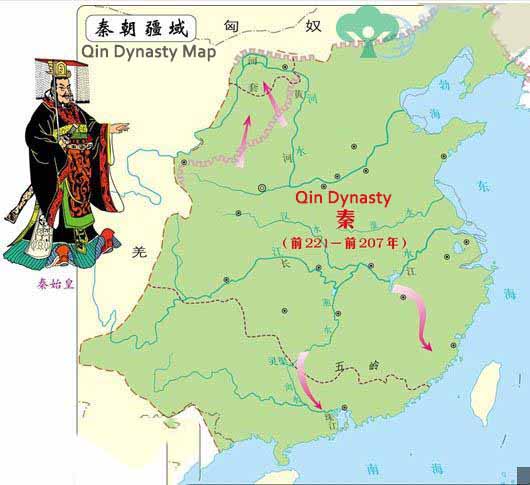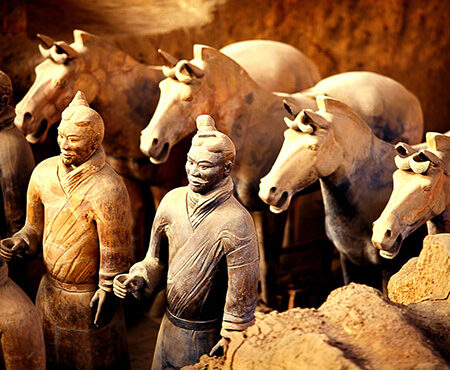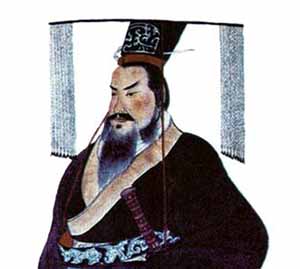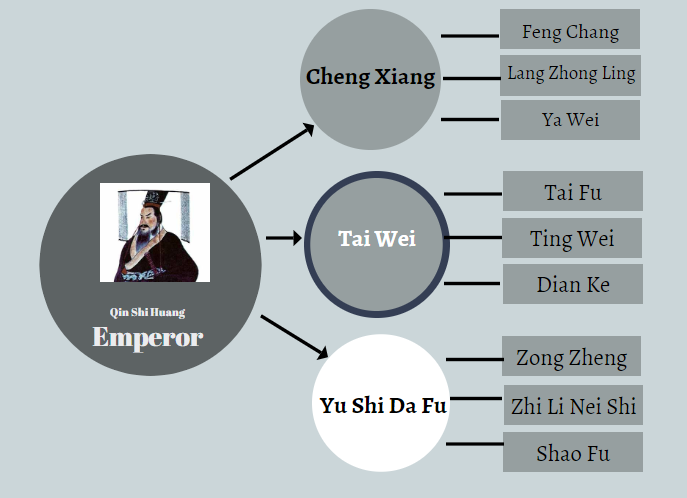The Qin Dynasty, from 221BC to 207BC, was the first unified, centralized country with multiple ethnicities in Chinese history. Though it ended only after the ruling of two emperors, the new systems established by Emperor Shi Huang made pioneering contributions to the development of China as a unified multi-ethnic country. They took Chinese history on a new path in the following 2,000 years.

Qin Shi Huang accomplished the unification in only 10 years.
Qin Dynasty is the first unified dynasty in Chinese history.
Qin Dynasty only lasted for 15 years and has two emperors.
Ying Zheng is the first emperor in Chinese history.
The absolute monarchy established by Qin Shi Huang lasted for 2000 years until the Qing Dynasty.
|
Time (Before Century) |
Ruler |
Event |
|
356 -338 |
Duke Xiao of Qin State |
Reforms of Shangyang gradually lifted Qin State out of poverty. |
|
338 - 325 |
King Huiwen of Qin State |
Qin State grew strong and struggled with other states. |
|
307 - 247
|
King Zhao Xiang of Qin State |
Qin State successfully weakened the existing powers of Qi, Chu, and the Zhao States and became the only strong power. |
|
247 - 238
|
King Qin Ying Zheng |
Ying Zheng ascended the throne and became the king. He put down the Domestic riot and prepared for the big conquest.
|
|
230 - 221
|
King Qin Ying Zheng |
Ying Zheng successfully conquered the other six states. |
|
221 - 210
|
Qin Dynasty was established and consolidated under the rule of Qin Shi Huang.
|
|
|
209 - 207 |
Second Emperor of Qin Dynasty |
Hu Hai (230 - 207 B.C) succeeded the throne and failed to continue his father Qin Shi Huang’s course. |
|
207 |
King Ziying of Qin |
Grandson of Qin Shi Huang only ruled 46 days before surrendering to Liu Bang (the revolting army leader). |
Qin Dynasty was derived from the Qin State (a vassal state of the Eastern Zhou Dynasty in the Hedong area of Gansu province) in the Warring States Period (476 BC - 221 BC). Qin State was relatively weak before 356 B.C until Duke Xiao of Qin State appointed Shang Yang to perform a deep and profound reform. Shang Yang took charge of the reform for 20 years and made the Qin gradually powerful and wealthy. In 325 B.C, Ying Si (son of Duke Xiao of Qin State) claimed himself a king and launched a series of wars in Yique (today’s Luoyang), Yanying (Yi Cheng and Jiangling cities of Hubei province), Huayang (south regions of Mount Hua) and Changping (Gaoping city, Shanxi province), laying the foundation for later unification of the Qin Dynasty. In 221 B.C, King Ying Zheng of Qin finally conquered the other six big vassal states of the Eastern Zhou Dynasty and unified the whole country. Qin's unification laying in there major aspects: First, Qin paid great attention to agriculture, laying a solid economic foundation for unification; Second, the policy of honoring military exploit forged a brave army; Third, opening and enterprising policies and absorbing the merits of other states were essential reasons for Qin's unification.
Qin State was relatively weak before 356 B.C until Duke Xiao of Qin State appointed Shang Yang to perform a deep and profound reform. Shang Yang took charge of the reform for 20 years and made the Qin gradually powerful and wealthy. In 325 B.C, Ying Si (son of Duke Xiao of Qin State) claimed himself a king and launched a series of wars in Yique (today’s Luoyang), Yanying (Yi Cheng and Jiangling cities of Hubei province), Huayang (south regions of Mount Hua) and Changping (Gaoping city, Shanxi province), laying the foundation for later unification of the Qin Dynasty. In 221 B.C, King Ying Zheng of Qin finally conquered the other six big vassal states of the Eastern Zhou Dynasty and unified the whole country. Qin's unification laying in there major aspects: First, Qin paid great attention to agriculture, laying a solid economic foundation for unification; Second, the policy of honoring military exploit forged a brave army; Third, opening and enterprising policies and absorbing the merits of other states were essential reasons for Qin's unification.
Emperor Shi Huang of the Qin Dynasty, Ying Zheng, after unifying the six states, called himself - Shi Huang Di, which means the first emperor. He believed that his achievements were better than the Five Emperors (Huangdi, Zhuan Xu, Di Ku, Tang Yao and Yu Shun), and the land under his rule is larger than those Three Kings(Fu Xi, Nu Wa, and Shen Nong)". Upon unification, he insisted on developing the social reform evolving from the Spring and Autumn and Warring States periods. He also implemented a series of measures to intensify the centralized sovereignty in politics, economy, military affairs, and culture.

Emperor Qin set fixed standards for length, weights, and measures, which propelled economic development. The Qin Dynasty also issued a uniform currency - round coins with a square hold in the middle and promoted financial communication among different nationalities and areas.
Besides, Qin Shi Huang standardized the written character, making the Xiaozhuan font the universal font. He also placed great importance on infrastructure: irrigation works and road-building projects. These measures ensured the smooth communication of political decrees and army dispatch, promoted economic and cultural exchanges among the regions and ethnic groups, and forged a solid material foundation for a unified state.
Emperor Qin Shi Huang was a tyrant despite his contributions to the country. To prevent his people from thinking freely, he prohibited private schools and ordered the historiographer to burn historical records and all folk books, only allowing scientific and technological books to exist. In 212BC, some scholars and alchemists blamed Emperor Qin Shi Huang for being greedy for power and abusive about the severe penalty. More than 400 people were arrested and buried alive under the crime of defamation. These two events are called 'To Burn the Books and Bury the Scholars Alive' in history.
Most of the wars and projects initiated by Emperor Qin Shi Huang had great and progressive significance. However, the urgent deployment, heavy taxation, rigid penalties, especially the construction of the luxurious palaces, the Great Wall, the famous Terra-Cotta Warriors and Horses, together with his mausoleum, brought a heavy burden and suffering to the people.
Reason 1: Rigidification of Legal System
Qin Dynasty was built based on legalism ideas. After unifying the six states, Qin Dynasty has entered a peaceful time. The old systems became so rigid that many of these systems turned to be harmful to people. The peasant uprising led by Chen Sheng and Wu Guang was also a result of the rigidification of the legal system. In 209, 900 garrison soldiers, including Chen Sheng and Wu Guang, were sent to guard the frontier in Yuyang (Beijing, Tianjin, and Hebei areas). However, the march was delayed due to the rainy weather. The peasants were afraid that the government would punish them for the delay. So they launched a revolt.
Reason 2: Tyrannical Ruling
The two most important foundations of the Qin Dynasty were farming and warring. The rulers often supplied all the country's resources to the military forces, which was quite useful during the warring period. However, in peaceful times after unification, those old rules were outdated. Besides, the Qin Dynasty levied many civil engineerings like the construction of Epang Palace, Great Wall, and Qin Shi Huang's Mausoleum, which greatly squeezed the commons.
Reason 3: Incompetence of Qin Government and the Lack of Local Forces
As outlaws, Chen Sheng and Wu Guang could make a sizeable revolt, showing that the Qin Government was a failure in terms of suppressing the uprisings locally.
Reason 4: No Major Force within the Country
Qin Dynasty army was mostly distributed to the frontiers to defend the outside aggressors, and there was no major force inside the country to control the uprising. When Qin Shi Huang unified the country, he confiscated the iron weapons and thought no one would dare to revolt without firearms.
Reason 5: Qin Shi Huang's Sudden Death
The most fundamental reason for the falling of the Qin Dynasty was the death of Qin Shi Huang. Although the Qin Shi Huang conquered the six states, they still wanted to resurrect their country. Qin Shi Huang suddenly died without arranging the succession. He certainly didn't think that the eunuch Zhao Gao dared to enthrone the incapable Hu Hai and murdered the capable ministers. All the factors came together and overturned the Qin Dynasty.
In 209 B.C, Hu Hai ascended the throne and intensified the exploitation and oppression of the peasants, whose endurance reached an extreme point. When the peasants were brewing the uprisings, the remaining forces of the six conquered states were also planning the separatist activities. In July of 209 B.C, a group of garrison soldiers was sent to guard the frontier, and their march was delayed by the rainy weather. According to the Qin Dynasty Law, these people would be killed. Therefore, Chen Sheng and Wu Guang began to lead the peasants and launched a large-scale uprising. The revolting force grew fast and attracted more people to join. Although this revolt was put down in a half year, various uprisings broke out everywhere.
Meanwhile, Xiang Liang (a descendant of Chu State) and Xiang Yu (nephew of Xiang Liang) echoed the revolt and grew stronger. Besides, Liu Bang from Peixian County also launched a peasant uprising and joined the Xiang’s army. After years of fighting, Liu Bang eventually broke into Xianyang (capital of Qin Dynasty), and King Ziying of Qin State surrendered to him. Therefore, the Qin Dynasty was officially conquered.
Qin Shi Huang established a complete bureaucratic administration system at both central and local levels. The government was presided over by a prime minister. The Yushidafu supervised the government, and the Taiwei was in charge of the army. They were all appointed and removed by the emperor himself. The whole country was divided into 36 prefectures, which were, in turn, divided into counties. The magistrates of the prefectures and counties were also directly appointed and removed by the emperor. In this way, the emperor could grasp all the power. After the unification, Qinshihuang expanded the original Qin’s laws and orders to the whole country, resulting in a unified law system.

Qin Dynasty reinforced the old Great Walls built by the vassal states of the Eastern Zhou Dynasty. In 214 B.C, a famous general Meng Tian was appointed to fight against the Huns and forced them back to the north. To further protect the realm, Emperor Qin Shi Huang ordered a grand Great Wall to be built in 215 B.C stretching from Linyao (present-day Minxian in Gansu Province) to Liaodong (in Liaoning Province). This is the Qin Great Wall.
The sections in the Guyuan area were built on the original walls built in the Qin, Zhao, and Yan States. It's said that millions of subjects were forced to labor for this great course, and many of them lost their lives. According to folklore, a farmer named Fan Xiliang was summoned to build the Great Wall three days after being newly married. He died of hunger and great fatigue, and his body was buried under the wall. His wife, Meng Jiangnv, missed him so much that she took on a journey of great difficulty to visit him only to find that he had died. She was devastated and wept for 3 whole days when the Great Wall collapsed, revealing her husband's corpse. She drowned herself after burying her husband again. It's hard to verify the authenticity of the story. It's hard to imagine how difficult it must have been to build this wall with the primitive technology available at the time.
The Great Wall of China
Terracotta Warriors and Horses Museum
Meet Qin Shi Huang - A Brilliant Yet Ruthless Emperor
Terracotta Army Day Tour with Local Food Exploration
Half Day Terracotta Army Tour with Mini-warrior Making Experience
Copyright © 2019 Lily Sun China Tours International, Inc. Terms &conditions | Privacy Policy | Sitemap